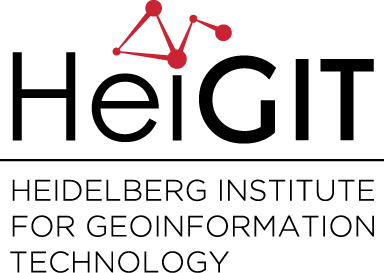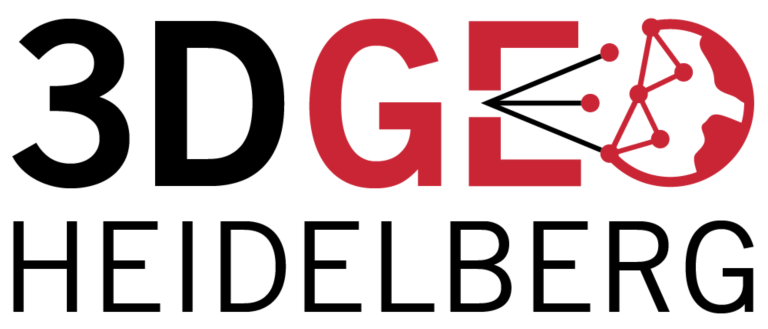Category: 3D
-
GIScience Heidelberg @ Santiago de Chile
The Heidelberg Center for Latin America (HCLA) in Santiago de Chile offers a Master of Science in Governance of Risk and Resources. This cooperative venture between the Geography institutes of Heidelberg University, the Universidad Catolica de Chile and the Universidad de Chile focuses on the (political and economic) controllability of problem-driven interaction between humans and…
-
LVISA release: plotting out of the map
The LIDAR Research Group (LRG) present a new release of LVISA: plotting out of the map. Besides the 3D presentation of a selected tree, plots with respect to feature statistic as well as the comparison to corresponding tree species, family and class are now also available. Who has not heard of LVISA: LVISA is a…
-
Low-cost 3D sensing of natural objects in the Dechen Cave
In one of Germany’s most visited show caves, the Dechen Cave near Iserlohn, different objects were captured with the GIScience‘s high-end terrestrial laser scanner Riegl VZ-400 and the low-cost structured light camera Microsoft Kinect™ by Johannes Fuchs, Bernhard Höfle, Martin Hämmerle (LiDAR Research Group) and Andrea Schröder-Ritzrau (Institute of Environmental Physics). Morphometric features that are…
-
Special Issue “Remote Sensing and GIS for Habitat Quality Monitoring”
Website: http://www.mdpi.com/journal/remotesensing/special_issues/rs-habitatmonitoring This Special Issue, “Remote Sensing and GIS for Habitat Quality Monitoring”, aims to pave the way for operational habitat quality monitoring from earth observation data for more effective habitat conservation. The demand for protecting biodiversity has been underlined by a number of recent international agreements, while the increasing size of protected habitats calls…
-
Laser scanning campaign at UNESCO World Heritage Site Lorsch Abbey
On Wednesday, 19th of March, the Kings Hall (Torhalle) facades at UNESCO World Heritage Site Lorsch Abbey were captured in 3D with a terrestrial laser scanner Riegl VZ-400 (provided by the Chair of GIScience) by Martin Hämmerle (LiDAR Research Group). The produced data set consists of about 65 million laser points and will allow for…
-
LVISA Expert User Contest – Winner of first prize
Today, the winner of the first LVISA Expert User Contest was awarded. The prize rewards the most valuable and extensive user feedback to the LVISA developers within the last year. The winner is Martin Hämmerle who receives a brand-new MS Kinect sensor (with portable screen) for 3D data capturing and a symbolic small tree to…
-
New Release of LVISA – Exploring 3D Point Clouds of Trees in the Web
The LIDAR Research Group (LRG) released LVISA – a novel system for analyzing point clouds of vegetation. This system examplifies a web-based laser scanning database for the management and analysis of tree reference signatures. It combines techniques and methods of LiDAR and 3D GIScience. We present a new release of LVISA including re-designed and re-implemented…
-
New video online: 3D solar potential assessment for renewable energy supply
Watch the video: http://youtu.be/TaCUaG5XEas We use methods like laser scanning and GIS in combination with computer science to simulate the sun’s path and the respective shadows that are cast by 3D objects. Thereby, we can assess the solar potential for certain areas and surfaces. Solar potential assessments can play a crucial role in studies that…
-
Fusion of human and remote sensor data in urban environments
OpenStreetMap (OSM) currently represents the most popular project of Volunteered Geographic Information (VGI): geodata are collected by common people and made available for public use. Airborne Laser Scanning (ALS) enables the acquisition of high-resolution digital elevation models that are used for many applications. Our new study combines the advantages of both ALS and OSM, offering…
-
GIScience and Interdisciplinary Mountain Research
Dr. Martin Rutzinger, an expert in interdisciplinary mountain research and GIScience, joins our research group in February 2014 as guest researcher. Martin is with the Institute for Interdisciplinary Mountain Research (IGF) of the Austrian Academy of Sciences (ÖAW) in Innsbruck. His research focuses on bridiging methodologies of remote sensing and geoinformatics for Earth observation and…
-
More than 100 Million Buildings in OpenStreetMap
and therefore also in OSM-3D.org. Just before Christmas the number of building footprints hit the magical number of 100.000.000. “Building” has been for some time now the most frequently used tag defining a map feature in OpenStreetMap. We use the building footprints from OSM to generate an automatically updated special database of 3D buildings displayed…
-
Digital Earth Science Forum “Digital Earth Innovations” at the University of Osnabrueck starts European cooperation
The International Digital Earth Science Forum organized by Institute for Geoinformatics and Remote Sensing (IGF), the Youth Commission of the International Society for Digital Earth (ISDE) and the Association for the Promotion of Geoinformatics in Nothern Germany (GiN e.V.) took place on 4th of December 2013 at the University of Osnabrueck inside the botanical garden.…


